Behringer Poly D: Now With Useful On-Board Clock Divide
[17 January 2025] The Behringer Poly D gets long-awaited on-synth clock division functionality plus more in firmware update version 1.1.3.
All About Behringer Poly D
A New Firmware for Poly D
Behringer‘s popular four-voice take on the Minimoog, the Poly D, has received a new firmware update with a much-requested feature. Previously, if you wanted to adjust the clock division, you had to do it from the (now outdated) Synthtool app. Thanks to the new update, clock divide parameters are accessible from the synth itself.
“Adjust clock division from 1/4 to 1/32T when synced to an external source,” said Behringer in an update to the company’s Facebook page. Behringer cautions to avoid adjusting the clock while a sequence is running to prevent sync issues. You can also adjust clock timing in the SynthTribe app.
Along with clock division, the new firmware update features improvements to the arpeggiator.
Owners of the Poly D can update via the Behringer site.


- Behringer Poly D product page
Behringer reveal the Poly D: a polyphonic 4-voice Minimoog
[26 November 2019] Behringer has revealed the outcome of their Model D Warp Drive tease video – it’s a polyphonic version called the Poly D and it looks like a proper synth – hooray!
Poly D
Yeah, we kind of guessed that this was coming, the tease had 4-voice poly written all over it. So Behringer has decided to push the envelope on the Model D and release a polyphonic version – awesome! And the best decision they’ve made in my view is to release as a proper looking synthesizer rather than in the Eurorack box version that the Model D, Neutron, Pro 1 and Wasp are coming in. This is how you make a classic synth. It looks great, it has a sound we already love but it gives us that little bit of polyphony that we’ve been crying out for.
The general idea is that it’s a 4 oscillator analogue synthesizer where you can use it a 4-oscillator monosynth, a 2-voice/2-oscillator unison synth or a single oscillator per voice 4-voice polysynth. There’s lots of discussion about whether it’s a “true” polysynth or whether it’s actually paraphonic. I’m generally of the opinion that if it can play more than one note at a time then its voicing is “polyphonic” but if it all goes through a single filter and envelope section (as this appears to) then it has “paraphonic” articulation. Other people describe these things differently but just as long as we all know what we’re trying to say then it’s fine. The first review videos have now emerged and so we can confirm that it has a single filter, VCA and envelope section making it officially 4-voice polyphonic with paraphonic articulation.
What else do we know? It has a chorus section modelled after the Juno 60, a distortion section from the DS-1 pedal and a built-in polyphonic 32-step sequencer and arpeggiator.
I love that they’ve made it look like a Minimoog. The knobs are properly sized and much bigger than the fiddly Model D and this is what they should have done in the first place in my view. You’ve got a 3-octave keyboard, proper pitch and modulation wheels, wooden cheeks, the panel angles to 3 different positions and it has a handful of CV points and MIDI/USB.
UPDATE: Thomann has opened preorders for £599 and give a delivery as 3-4 weeks which could mean you’ll get one before Christmas – probably.
More information
8 responses to “Behringer Poly D: Now With Useful On-Board Clock Divide”

 4,9 / 5,0 |
4,9 / 5,0 | 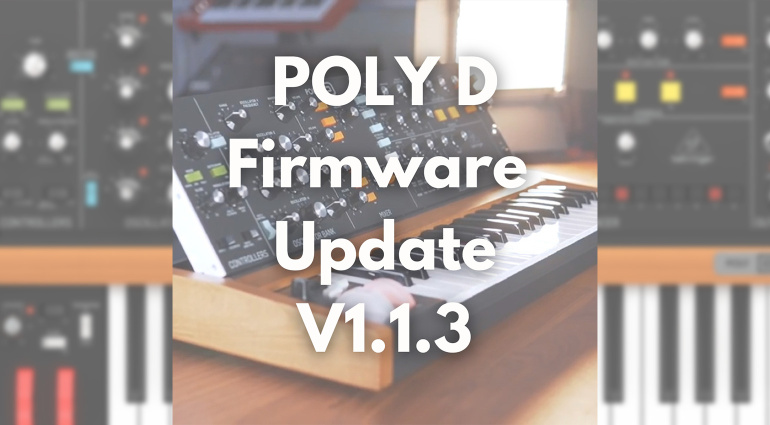
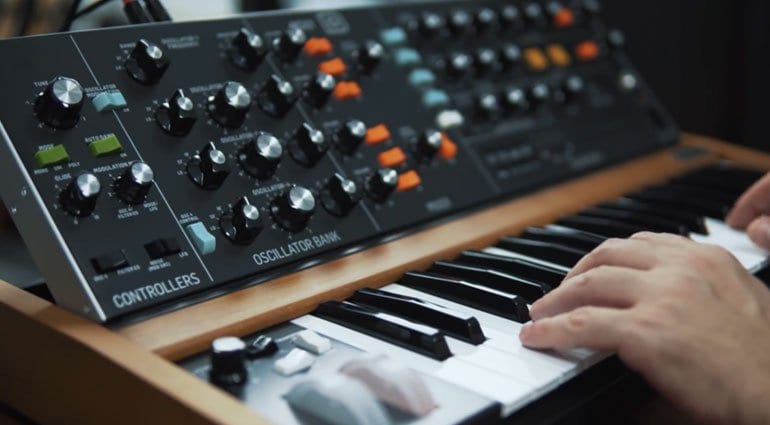
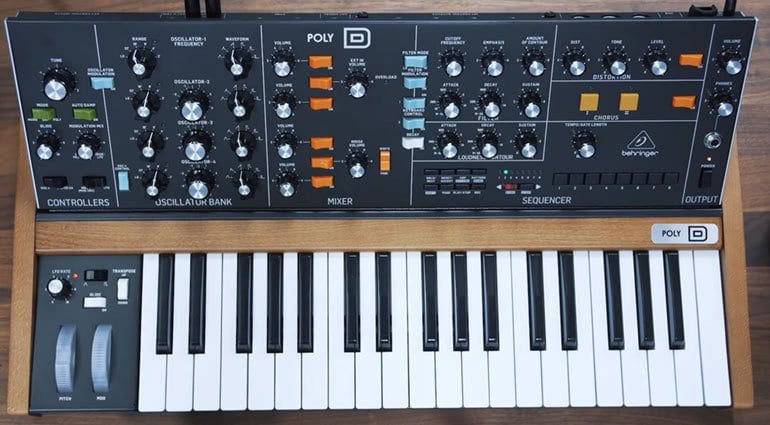
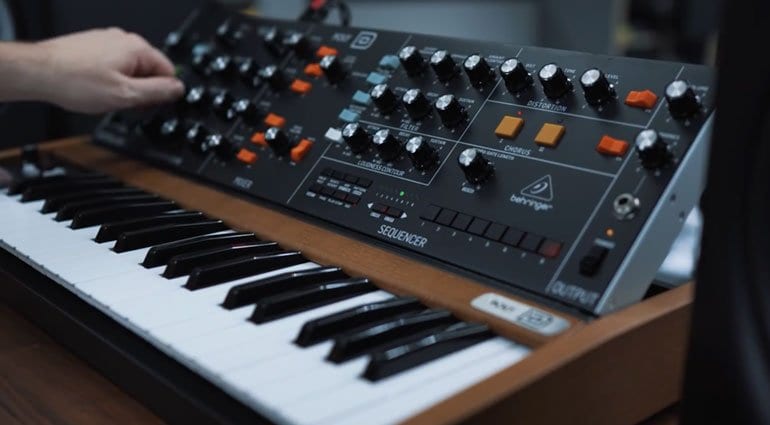





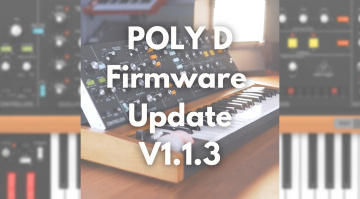


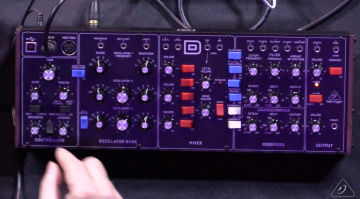


I already love all the whining from Moog fanboys and rabbid gear site dwellers. Keep them coming Behringer!!
“Other people describe things differently”, no just Uli, and it’s not “fine”, it’s misleading and untrue to call this synth polyphonic. These are technical words with specific definitions, paraphonic and polyphonic are not interchangeable, they are different types of synths. Behringer simply can’t admit it is paraphonic because it would be called the Para D, which sounds like parody, which is funny considering.
Besides that, it looks and sounds kind of interesting.
It’s misleading certainly but only because they didn’t mention paraphony and most people misunderstand the relationship between polyphony and paraphony. Polyphony refers to how many notes can be played not how they can be articulated. So it is 4-note polyphonic but with paraphonic articulation. Sadly I don’t think people are going to grasp this any time soon 😀
This isn’t polyphonic. That would be there is a signal path for each voice – including filter and amplifier. Not the case here…
You’re talking about fully articulated polyphony whereas here we have 4-note polyphony with paraphonic articulation. Polyphony is not dependent upon the articulation of the signal path although you are not alone in believing that it is 😀
Sadly, no. There is no common usage of the word ‘polyphonic’ that DOESN’T imply full independent voices with filters and envelopes. It has been the standard description since the 80’s.
It is very disingenuous of anyone to refer to a paraphonic synth as polyphonic without IMMEDIATELY adding the caveat of it being ‘in truth’ paraphonic.
Which this piece doesn’t. Nice try….
Also the Thomann link now says 699.
699 Euros, 599 Uk pounds 😀
You are currently viewing a placeholder content from Facebook. To access the actual content, click the button below. Please note that doing so will share data with third-party providers.
More InformationYou are currently viewing a placeholder content from Instagram. To access the actual content, click the button below. Please note that doing so will share data with third-party providers.
More InformationYou are currently viewing a placeholder content from X. To access the actual content, click the button below. Please note that doing so will share data with third-party providers.
More Information